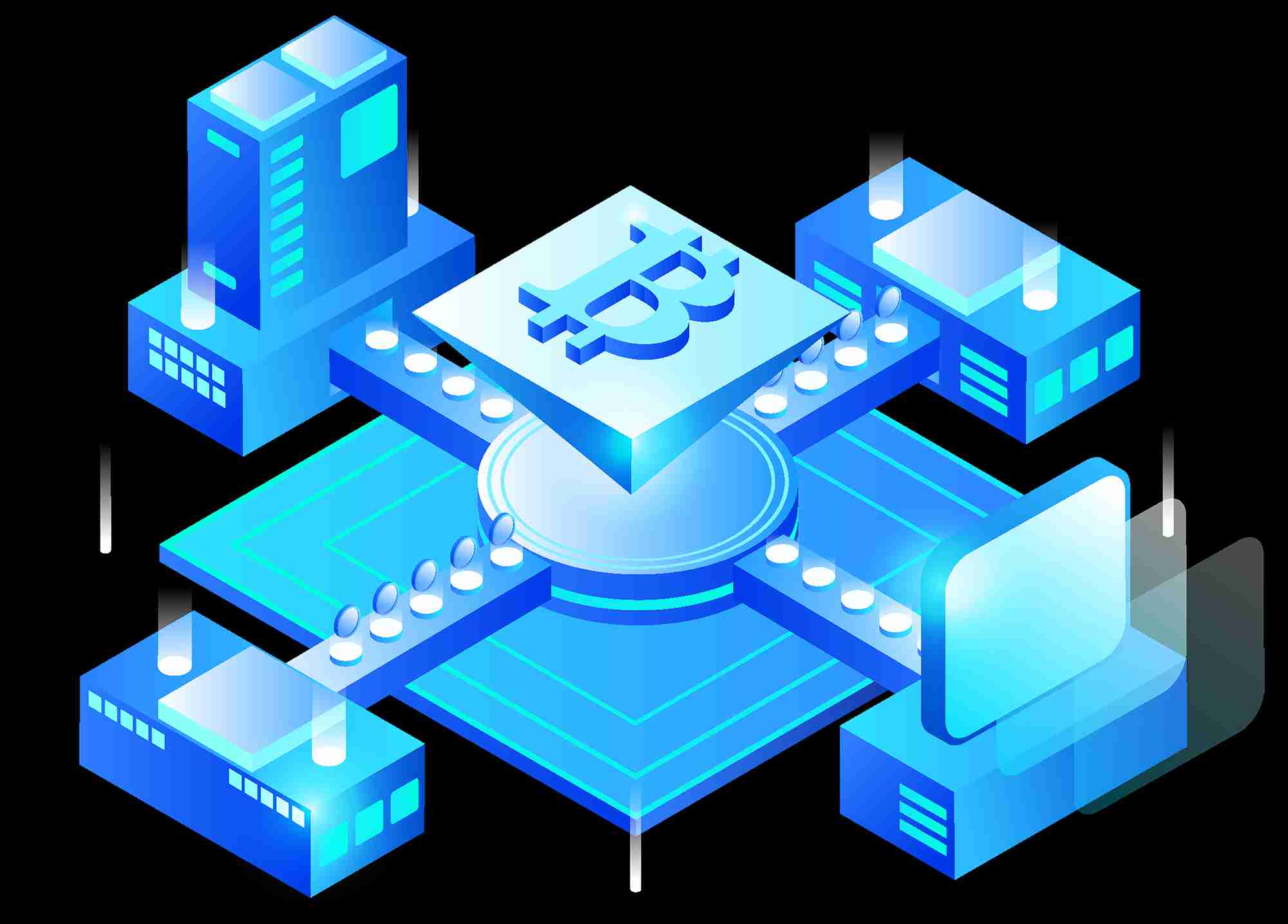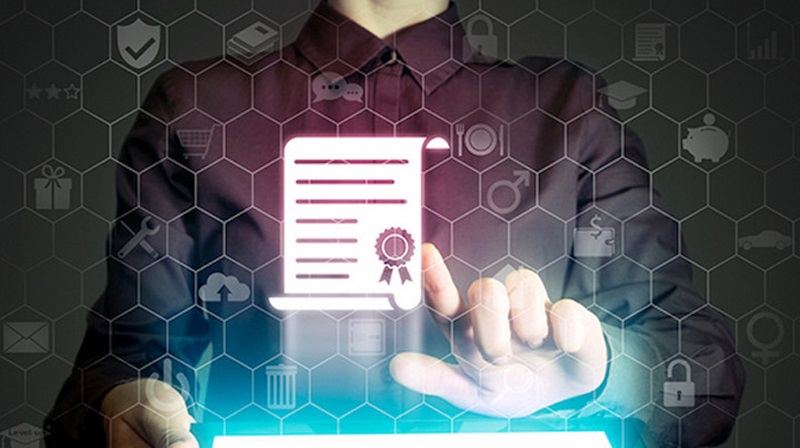How does security impact blockchain adoption? It’s the key that turns the tech maze into a clear path forward. Let me share a fact: when users know their digital assets are safe, they’re more likely to jump on the blockchain train. So, it’s simple – boost security measures, and watch adoption rates soar. Keep reading as we untangle the complex interplay between blockchain tech and iron-clad security, ensuring you’re not left questioning the vitality of a safe, decentralized future.
How Security Bolsters Blockchain Adoption? Understanding the Role of Security in Blockchain Technology
Identifying Potential Threats and Vulnerabilities
Security is like the lock on your front door. It keeps your house safe from thieves. The same goes for blockchain. It needs strong locks to keep data safe. Just like a house has many doors, blockchain has many parts that need protecting. Bad guys look for weak spots to break in. They can use these to steal or mess with data.
Hackers are one big threat to blockchain. They can try to mess up the data that is stored across many computers. They look for weak spots in code called “smart contract vulnerabilities.” They do this to take control or steal. It’s a real threat we must fight.
There’s also the risk of people inside doing harm. They might have access but could use it the wrong way. Keeping blockchain safe means watching both outsiders and insiders.
To make sure blockchain is strong, we need to be really careful. We have to spot risks early. And we need good plans to keep it safe.
The Importance of Encryption and Secure Consensus Algorithms
Encryption is like turning a message into a secret code. It helps keep our data hidden from others. In blockchain, we use it to make sure only the right people can read the data. It’s like giving them a special key to unlock the code.
When many computers need to agree on something, they use something called “consensus algorithms.” This is how they make sure everyone agrees on what data is right. It’s like having many checks to keep a list clean. But it has to be strong, or else bad guys could trick it.
There are different kinds of these algorithms, like “proof of work” or “proof of stake.” Each has its own way of keeping the list safe. Some use a lot of power, and some are less harsh on the environment.
We must use the best encryption and consensus algorithms. This way, we make sure the blockchain is hard to break into. Keeping blockchain safe helps people trust it. This can make more people want to use it.
Making sure these algorithms are strong is super important. They need to not only work well but also not break under stress. If we make sure they are built right, we can help keep everything running smoothly.
When we have strong security, people trust blockchain more. They know that their stuff is in good hands. This trust is what will help blockchain become used by more people. It’s not easy, but working on security is worth it. It’s what will help keep blockchain growing long into the future.
Best Practices in Blockchain Security for User Trust
Implementing Risk Management and Smart Contracts Security
We need to keep our blockchain safe. Why? So people can trust it. Trust is key. When folks trust blockchain, they use it more. They share it with friends. More use means more value for us all. So, how do we build this trust? We start with risk management. It’s like wearing a helmet when you ride a bike. It keeps you safe. In the blockchain world, we stop bad things before they happen. We find problems early. Then, we fix them. Safety is always in mind.
Smart contracts are like promises in the tech world. But sometimes, there are holes in these promises. This can let hackers in. That’s not good. We need to check these contracts a lot. We need to make sure they do what they should. This helps keep everything working right. People feel safe. They use blockchain more. Everyone wins.
Ensuring Compliance with Security Standards and Regulations
Let’s talk about rules. By playing it safe, we win big. For blockchain to really fit in, it has to follow the rules. Not just any rules. The big ones, like KYC and AML. “Know Your Customer” and “Anti-Money Laundering” are these rules. They help stop bad money moves. Blockchain needs to be clean. When it is, people like banks, and even you, will want to use it. It’s all about staying safe and doing things right.
These rules make sure everyone plays fair. They make sure we know who is who. When we know who’s using blockchain, we feel better about it. It’s like knowing who’s coming to your party. Rules also keep our money safe. This means fewer worries about losing cash to bad guys. That’s good for everyone. It makes more people want to use blockchain. Staying safe means growing big.
By doing all this safety stuff, blockchain gets more friends. More friends mean more trust. More trust means more use. And that’s what we’re after. So let’s keep our blockchain safe and keep the trust growing.
The Cost-Benefit Analysis of Blockchain Security
Balancing Scalability with Robust Security Measures
When we talk about blockchain, we often hear about how safe it is. But, say we want to use blockchain more and have it handle tons of data. That’s where it gets tricky. We want a blockchain that moves fast and can grow, yet we also need it to be super safe. If we focus only on making it bigger and faster, we might miss some security weak spots.
Imagine you have a fortress, but as you add more rooms, you forget to lock some doors. Someone could sneak in! That’s why having strong security is key when we grow our blockchain. This means using tough encryption methods and nifty things called consensus algorithms. These are like secret handshakes – if someone doesn’t know the handshake, they can’t get in.
By making sure our blockchain stays as tough as a tank, we keep our digital stuff safe. This way, anyone using the blockchain can chill, knowing their stuff won’t get swiped.
Assessing the Financial Impact of Security on Blockchain Adoption
Now, let’s talk cash. Keeping blockchain safe isn’t free. It’s like putting the best locks on your house. It costs a pretty penny, but it’s worth it. Yet, some folks might worry that spending so much to keep blockchain secure could slow down its use.
Why? Well, think about it. If we have to spend heaps on security, that’s money we can’t use for other cool things. Plus, if security makes the blockchain sluggish or harder to use, people might not want to hop aboard the blockchain train. That’s a bummer because blockchain can do so much for us.
But here’s the twist. When people know their money and info are tight as a drum on blockchain, they’ll want to use it more. That trust can lead to more folks jumping in and even more money flowing through the blockchain.
If you’re a business, investing in top-notch security for your blockchain can actually be a smart move. It can win you more customers and, in the end, more moolah. And for serious stuff like health records or voting info, you can’t skimp on security. That trust is worth every dime.
As folks like me keep working on making blockchain safe, we need to think about these things. We want blockchain to be fast and handle lots, but we can’t take shortcuts on safety. And even though it might cost a bit, it’s an investment in a future where blockchain helps us all. From buying coffee to buying houses, knowing our digital lives are locked up tight is the peace of mind we all need.
Overcoming Security Barriers for Wider Blockchain Adoption
Strategies for Securing Digital Assets and User Privacy
Everyone wants their online stuff kept safe, right? That’s where blockchain can shine. But folks get nervous about new tech. They’ve heard stories about hacks and money lost. That’s why adopting blockchain safely is a big deal. It’s like making sure your bike has a good lock. You need encryption in blockchain to keep those digital dollars secure. Imagine a secret code only you know. That’s encryption, and it’s key to keeping prying eyes out of your blockchain business.
Smart contract vulnerabilities can also cause headaches. These are like the rules of the game for blockchain. When the rules aren’t tight, things can go wrong. But we’ve got something called consensus algorithms. These help everyone agree on what’s true and what’s not, kind of like when your friends all agree on the same place to hang out. These algorithms are the heroes that keep the blockchain fair and unchangeable.
Now, let’s talk about trust in blockchain platforms. You trust your best friend with your secrets, right? Blockchain needs that kind of trust. Sure, it’s cool and all, but without trust, people won’t use it. Trust comes when everything is protected and people know their stuff is private. With user privacy as a priority, blockchain becomes as trusted as your BFF.
Boosting Confidence in Blockchain through Third-Party Audits and Secure Networks
Do you ever show your math homework to a buddy to make sure it’s right? That’s what third-party audits do for blockchain. These audits are checks done by outside experts. They look at everything with fresh eyes. They make sure blockchain security measures are up to snuff. This can make people breathe easier about blockchain tech. It’s like having a stamp of approval on your work.
When folks hear “secure blockchain networks,” they think of a fortress guarding valuable stuff. That’s not far off. A secure network keeps out the cyber threats to blockchain, stopping the bad guys from breaking in and messing things up. With solid security, people can count on blockchain like they count on their home’s front door to lock. It’s all about making blockchain a place where people want to keep their treasures.
Nobody loves dealing with risks, but blockchain risk management is a must. Think of it as the safety gear you wear when riding your bike. Good helmets and pads keep you safe if you take a spill. The same goes for your blockchain stuff. You need good tools to manage the bumps that come with tech life.
In the end, securing digital ledgers is like putting your valuables in a safe. It’s crucial to show everyone that blockchain is strong enough to keep their treasures safe. When folks see blockchain standing tall against hacks and risks, they’ll want to join in and be part of the blockchain crowd. And that’s how we turn the tech maze into a tech playground where everyone wants to play.
We’ve covered a lot in this blog about keeping blockchain tech safe. We dug into possible risks and how to spot them. You learned why encryption and trusty consensus algorithms matter so much. I showed you how to build user trust with smart choices in risk and smart contract management. You also saw the need for meeting security rules and standards. We looked at how security steps can cost money but why they’re worth it for blockchain growth. And to wrap up, we explored how to tear down security walls to invite more people to use blockchain. You now know how secure networks and third-party checks can boost everyone’s confidence in this tech. Stay smart, stay secure, and remember that strong blockchain security is key to its success in the future!
Q&A :
How is blockchain security influencing its adoption rate?
Blockchain’s inherent security features, including encryption and decentralization, are critical in promoting adoption across various sectors. Potential users need assurance that their transactions will be secure and immutable. However, concerns about security incidents, like 51% attacks and smart contract vulnerabilities, might slow adoption rates.
What security concerns are hindering the widespread adoption of blockchain technology?
Security incidents within blockchain networks, such as exchange hacks, stolen private keys, and flaws in smart contract design, have made organizations hesitant to adopt the technology. The need to establish standardized security protocols is essential for reassuring enterprises about the safety of embracing blockchain.
Can improved security protocols boost blockchain adoption?
Definitely. As security protocols in blockchain technology continue to evolve and strengthen—through measures like better consensus mechanisms, enhanced encryption methods, and robust smart contract auditing—trust in blockchain technology will likely increase, facilitating greater adoption across diverse industries.
What role does regulatory compliance play in blockchain security and adoption?
Regulatory compliance plays a pivotal role in blockchain security and adoption. Clear regulations can provide a framework for safe and secure use of blockchain, ensuring that the technology meets the necessary legal standards which, in turn, can increase confidence among businesses and consumers to adopt blockchain solutions.
How can businesses ensure their blockchain adoption is secure?
To ensure secure blockchain adoption, businesses should conduct thorough security audits, employ best practices in smart contract development, and keep abreast of the latest security advancements in blockchain technology. Partnering with reputable blockchain service providers that prioritize security can also be a vital step in safeguarding their blockchain initiatives.





